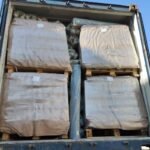
In the dynamic field of roofing materials, constant advancements and innovations aim to address the limitations of traditional options. Resin tiles, once hailed for their lightweight nature and ease of installation, have faced criticisms due to their susceptibility to cracking and fading. As a result, metal tiles have emerged as a robust and visually appealing alternative, capturing the attention of builders and homeowners alike.
The Challenges with Resin Tiles
Resin tiles, composed of synthetic materials, offered a viable solution for roofing needs, particularly in applications where weight was a concern. However, their vulnerabilities have become more evident over time. Exposure to extreme weather conditions, including intense sunlight, heavy rain, and temperature fluctuations, can cause resin tiles to crack and lose their color integrity. This not only compromises the structural integrity of the roof but also leads to an unsightly appearance, necessitating frequent replacements to maintain aesthetic standards.
The Rise of Metal Tiles
In response to the limitations of resin tiles, metal tiles have gained significant traction as a preferred roofing material. Known for their durability, longevity, and aesthetic versatility, metal tiles offer a compelling solution that addresses the shortcomings of their predecessors.
One of the primary advantages of metal tiles is their exceptional strength and resistance to environmental factors. Made from high-quality metals such as aluminum, steel, or copper, these tiles are engineered to withstand extreme weather conditions without cracking, warping, or fading. This durability ensures a longer lifespan for the roof, reducing the need for frequent repairs or replacements and ultimately saving on maintenance costs.
Aesthetics is another key factor driving the popularity of metal tiles. Available in a wide range of colors, finishes, and styles, metal tiles can be customized to suit any architectural design, enhancing the overall visual appeal of a property. Their ability to retain their appearance even under harsh weather conditions ensures that the roof maintains its curb appeal for years to come.
Furthermore, metal tiles offer environmental benefits. Many manufacturers produce these tiles using sustainable practices, such as recycling old metal products, and the longevity of metal roofs reduces the need for frequent replacements, thereby minimizing waste.
Conclusion
The rise of metal tiles as the preferred choice for roofing construction is a testament to the industry’s commitment to innovation and improvement. While resin tiles once held a prominent position in the market, their vulnerabilities to cracking and fading have paved the way for more advanced alternatives. Metal tiles, offering a combination of durability, aesthetic versatility, and environmental responsibility, have emerged as a superior solution for modern roofing needs. As the demand for high-performance, low-maintenance roofing materials continues to grow, the adoption of metal tiles is poised to further solidify their position at the forefront of the industry.



